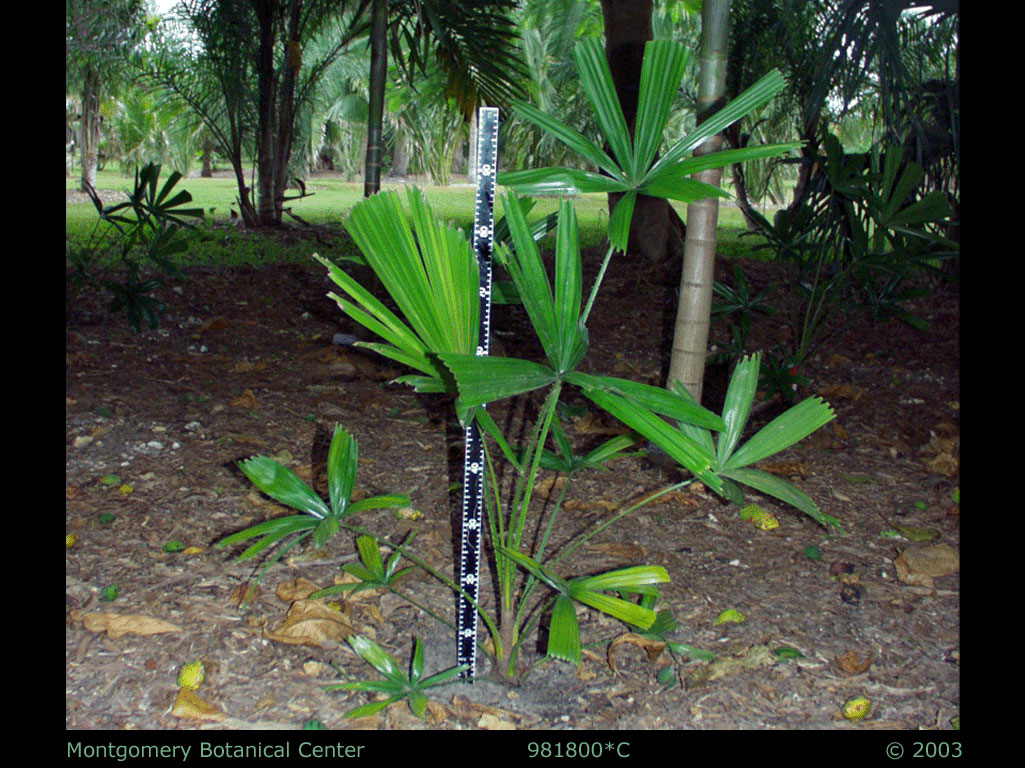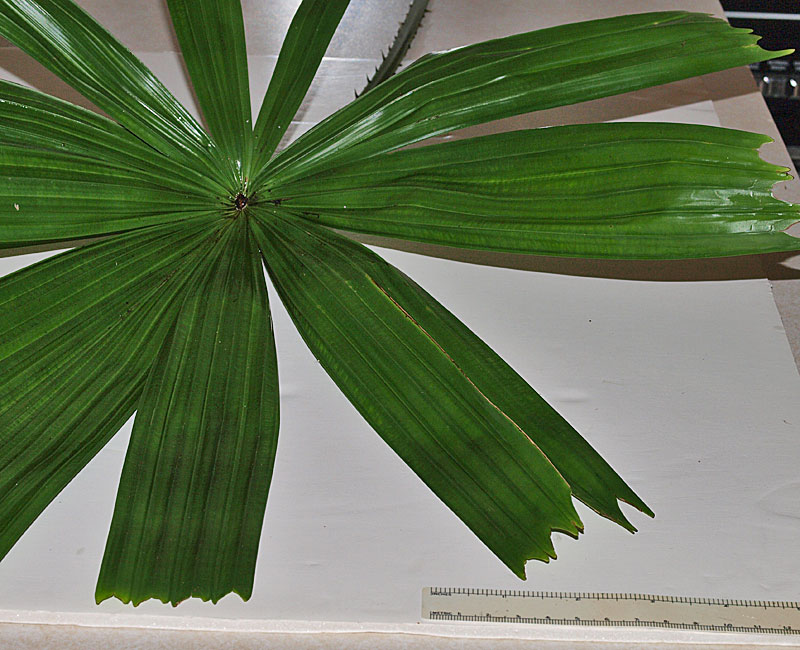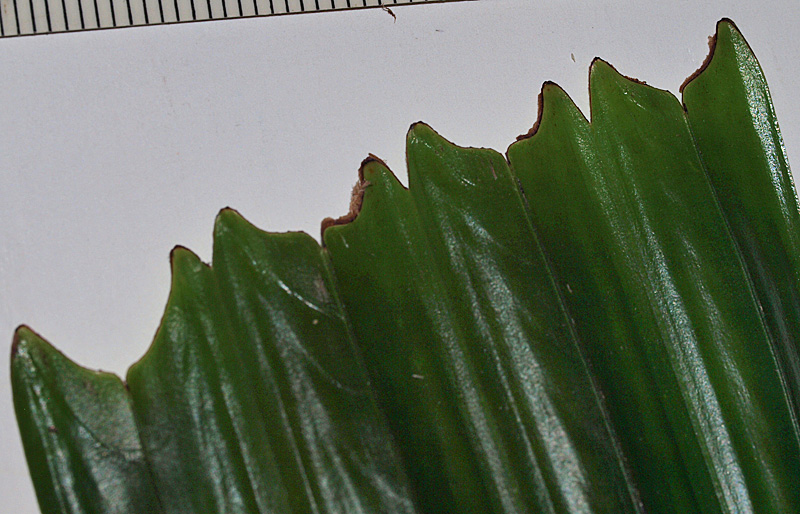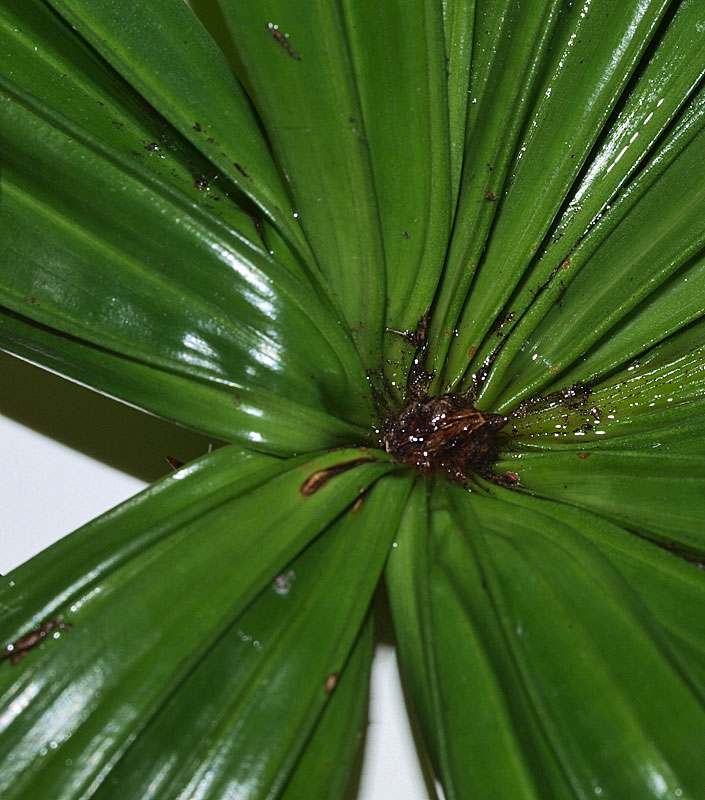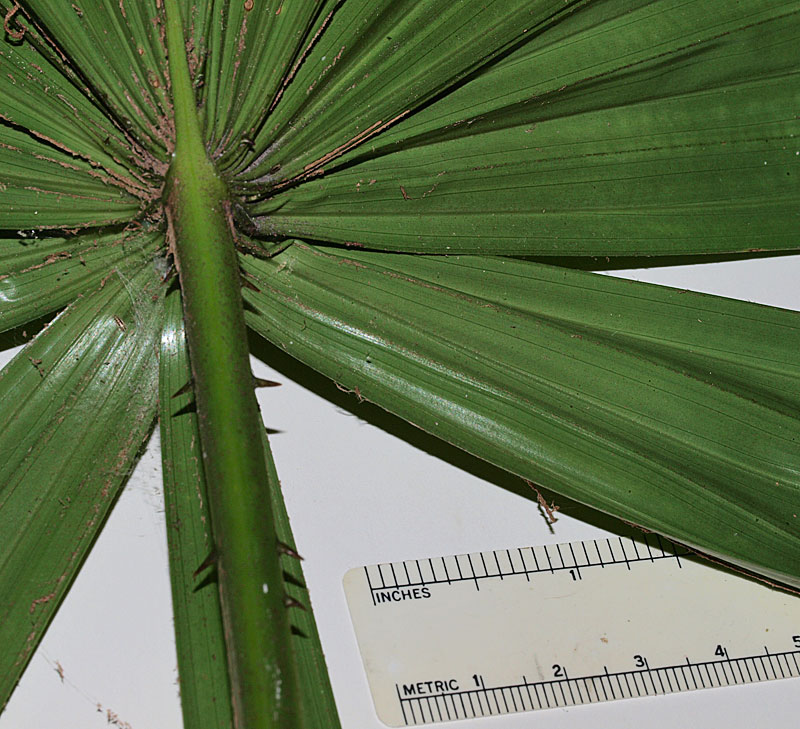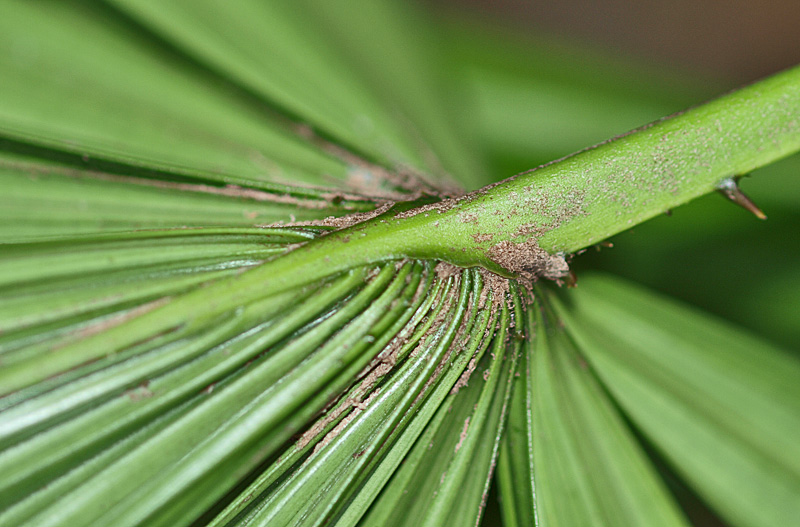Licuala spinosa
|
Licuala spinosa young palm. (MBC photo: 981800-GD01) Photograph courtesy of Montgomery Botanical Center http://www.montgomerybotanical.org/ |
|
Licuala spinosa adaxial leaf blade |
|
Licuala spinosa adaxial leaf segment tips (mm scale) |
|
Licuala spinosa adaxial leaf blade with hastula |
|
Licuala spinosa abaxial leaf blade and petiole with spines |
|
Licuala spinosa abaxial leaf blade with costa and tomentum |
Common name
spiny licuala, mangrove fan palm
Description
Stems: Clumping, upright stems to 4 m tall and 8-10 cm in diameter, with remnant fibers from leafleaf:
in palms -- the leaf blade (which is usually divided into leaflets or leaf segments), the petiole (or leaf stalk) and the sheath (which forms the attachment of the leaf to the stem)
sheaths. Leaves: Costapalmatecostapalmate:
a fan-shaped leaf with a midrib (costa) extending into the blade, sometimes extending far enough into the blade to cause it to curve (e.g., <em>Sabal palmetto</em>)
, with a stiff blade, divided into wedge-shaped, multi-ribbed segments, and forming a circle about 1 m across. Leafleaf:
in palms -- the leaf blade (which is usually divided into leaflets or leaf segments), the petiole (or leaf stalk) and the sheath (which forms the attachment of the leaf to the stem)
surfaces, shiny green; leaftips, truncate and toothed. The petiole is armed throughout its length with teeth along the margins. Flowers and fruits: Inflorescences (1-2.5 m long) are branched to two orders in long drooping spikes. Flowers are small, white and bisexual. Fruits are small (1-1.5 cm), spherical, and red when ripe.
Diagnostic features
Field: Costapalmatecostapalmate:
a fan-shaped leaf with a midrib (costa) extending into the blade, sometimes extending far enough into the blade to cause it to curve (e.g., <em>Sabal palmetto</em>)
leaves, with a stiff, rounded leafleaf:
in palms -- the leaf blade (which is usually divided into leaflets or leaf segments), the petiole (or leaf stalk) and the sheath (which forms the attachment of the leaf to the stem)
blade in wedge-shaped, multi-ribbed segments, forming a broken circle; both leafleaf:
in palms -- the leaf blade (which is usually divided into leaflets or leaf segments), the petiole (or leaf stalk) and the sheath (which forms the attachment of the leaf to the stem)
surfaces, deep green; leaftips, bifidbifid:
deeply cleft into two usually equal parts or two-lobed from the apex; for example, palms with bifid leaves or leaflet tips (e.g., <em>Chamaedorea metallica</em> has bifid leaves)
.
Lab: Tufts of pale tomentumtomentum:
a covering of closely matted or fine hairs on plant leaves
on the abaxialabaxial:
away from or the side of an organ facing away from the axis (<strong>ab </strong>as in <strong>ab</strong>andon); for example, the lower surface of a leaf blade or petiole
leaf folds near costacosta:
mid-rib or vein
.
May be confused with
Other Licuala species, perhaps, but the circular leafleaf:
in palms -- the leaf blade (which is usually divided into leaflets or leaf segments), the petiole (or leaf stalk) and the sheath (which forms the attachment of the leaf to the stem)
blades with wedge-shaped, multi-ribbed segments are quite distinctive.
Distribution
Native to Malaysia, Indonesia
Scientific name
Licuala spinosa Thunb.
Family
Arecaceae/Palmae
Synonyms
Licuala horrida Blume


